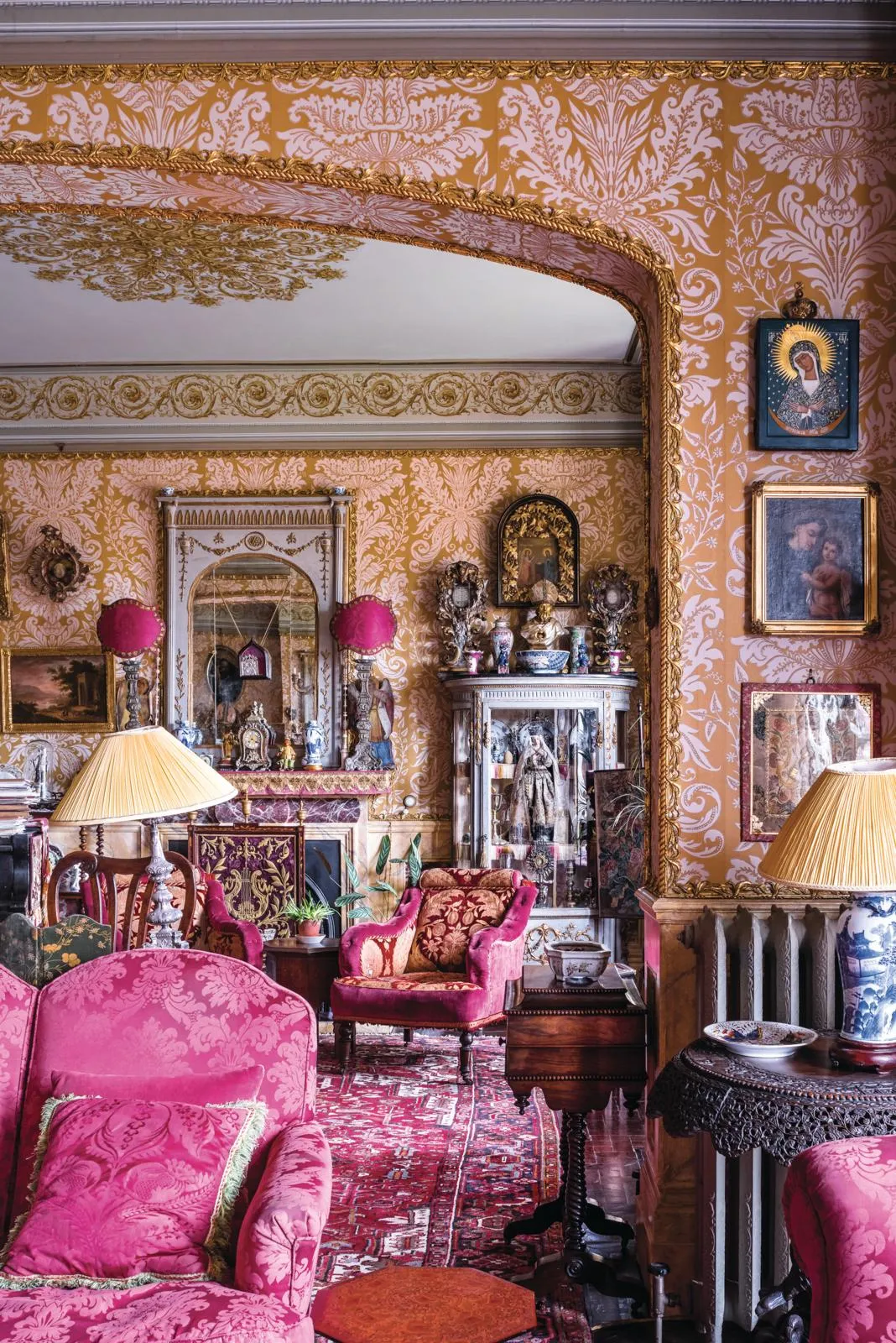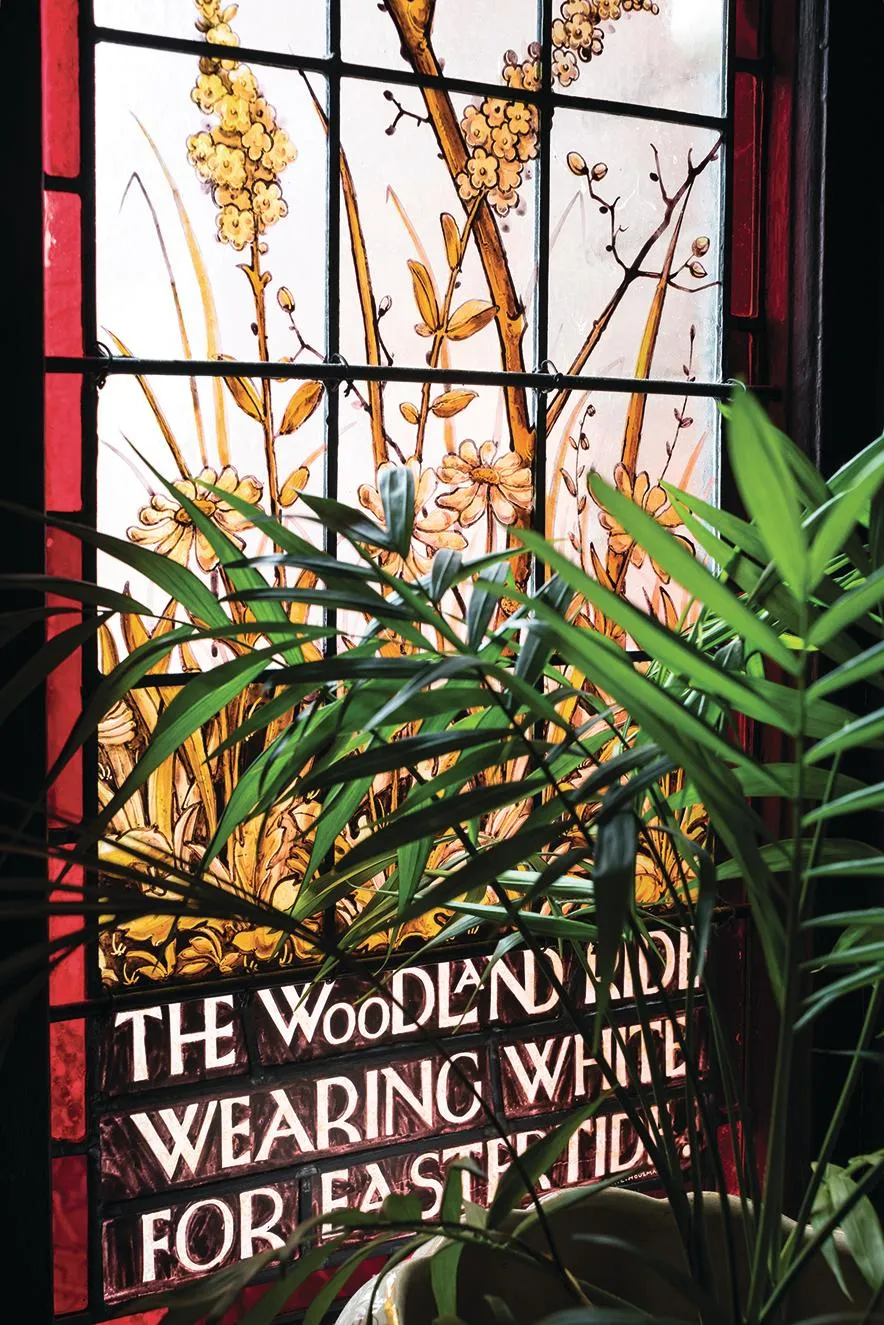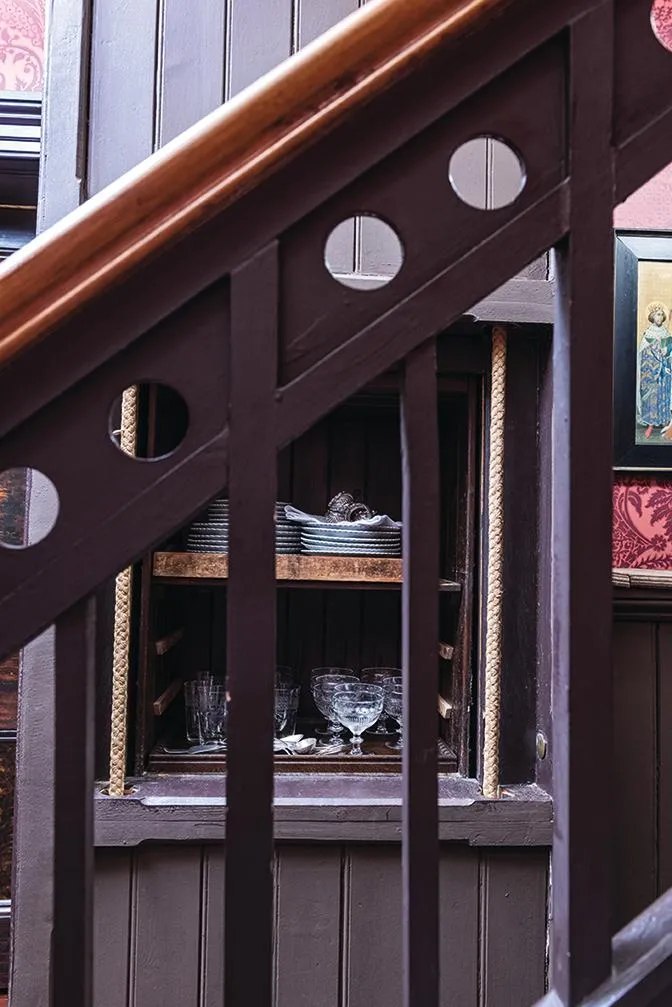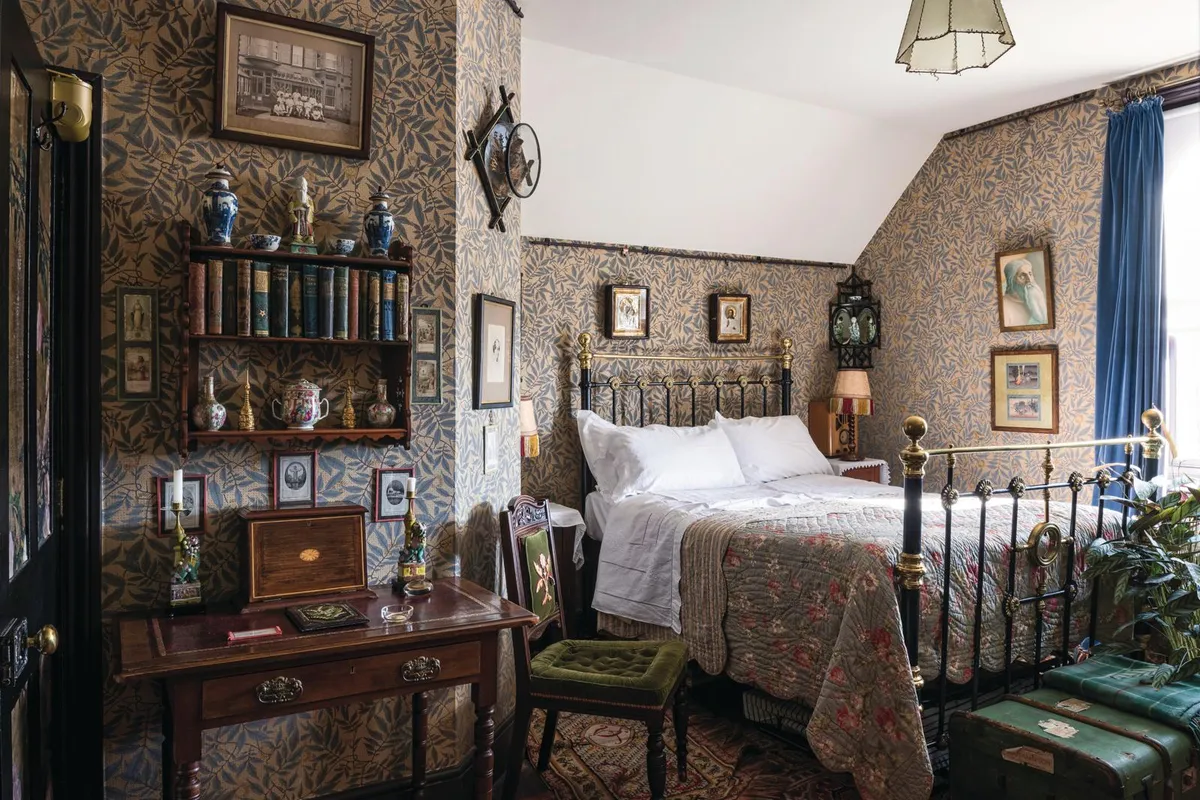Walk through the front door of St Benedict and it’s as though you’ve travelled back to the late 19th century. Daylight filtering through stained glass windows in the hall gently illuminates the impressive oak panelled walls and the tessellated tiled floor, which is overlaid with oriental rugs.
Paul Oxborrow and Stephen Groves moved into the house 25 years ago, first buying a flat on the raised ground floor. Living close to the sea appealed to the couple, as did the generous room sizes and the quality of the high Victorian architecture. ‘The fact that it was also affordable made it an attractive prospect,’ says Paul, ‘although the decoration, or lack of it, being white throughout, was not to our taste.’
Subsequently, when the maisonette on the top two floors became available they purchased that as well and, in 2002, when the basement flat came up for sale, they finally had the entire house to themselves – but not for long. ‘The idea of running the house as a B&B evolved during the course of the renovation. Most of our guests are here because they love the idea, just as we do, of going back in time to the 19th century,’ says Paul. ‘It’s been a labour of love and sharing it with our guests is all part of the fun.’
‘The house dates from 1882 but, when it was divided into three flats in the 1920s, some fairly substantial alterations were made,’ Paul continues. ‘We decided to restore the original layout and decorate in a style appropriate to the age of the house, using antique furniture and vintage fittings wherever possible.’ While their guests enjoy the novel attractions of the Victorian era for a few nights, Paul and Stephen are immersed in the past full-time; the basement kitchen is startlingly devoid of mod cons.
You might also like a Victorian seaside villa in Hastings
‘The sink is now back in the scullery along with the washing machine. That’s a necessity in a B&B,’ Paul points out. ‘We cook on a reconditioned oil-fired Aga – a full house generally means serving multiple cooked breakfasts and an Aga is ideal for that.’
Restoring the original layout led to a trawl through Hastings Council’s building records. Research is second nature to Paul, who taught religious studies in his previous life. ‘We wanted to ascertain the exact position of walls and doors and the original staircase. We even reinstated the dumb waiter that had been removed when the building was converted into flats. On busy breakfast mornings it saves so much time being able to send the plates up and down.’
Overlooking the garden at the back of the house is the splendidly over-the- top double drawing room, with Stephen’s Blüthner grand piano taking centre stage in the middle. ‘When we moved in, one half of the drawing room was the kitchen, and the fireplace in that part was long gone, but we saw a matching one in a Tunbridge Wells antiques shop and bought it just in case.’
The elaborate scrollwork cornice is in fact a wallpaper border, while the architraves and skirting were marbleized by a skilled decorative artist. ‘The antiques and bric-a-brac shops of Hastings and St Leonards have been excellent hunting grounds and, although we had a general idea of the sort of furniture and decorative features that would suit the house, it’s an interpretation of the era rather than a museum-like collection of Victoriana.
You might also like a stylist’s Victorian terrace filled with heirlooms
For instance, when we commissioned the panels of stained glass for the hall, we opted for a design that was original and evoked the era rather than a facsimile.’ In common with most homes, there are pieces found by Paul and Stephen on their travels, things they’ve been given and items they’ve adapted, but almost everything dates from the latter half of the 19th century.
Paul and Stephen are members of the Orthodox Church and religious artefacts feature strongly as a decorative theme throughout the house, juxtaposed with collections from fine china to waxed flowers.
Each of the five guest bedrooms is different in style; the most spacious (known as Mr Parry’s, after an owner c1900) is a suite with a four-poster bed. The decoration of the three bedrooms on the attic floor is no less charming. ‘Children and servants would have slept here, so we decided a simpler look would be appropriate,’ says Paul.
Anyone with a passion for Victorian architecture and decoration is sure to find inspiration, along with an unusual level of hospitality, at St Benedict.
More homes from Homes & Antiques
- A converted Victorian pub in Shoreditch
- How to renovate a Victorian home with maximalist interiors
- Inside Annie Sloan’s colourful Victorian house
- A Victorian home filled with vintage industrial pieces
Sign up to ourweekly newsletterto enjoy more H&A content delivered to your inbox.























